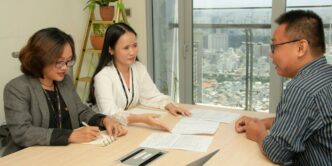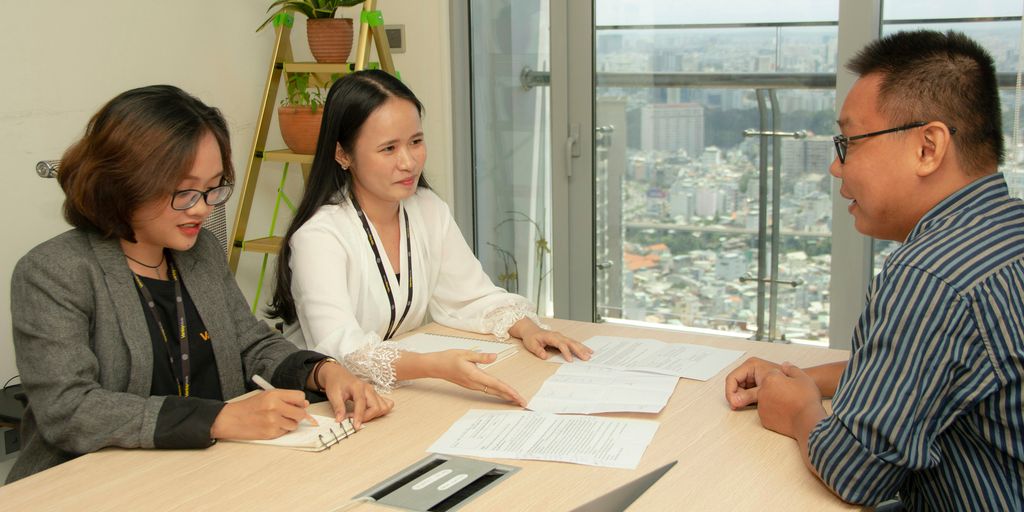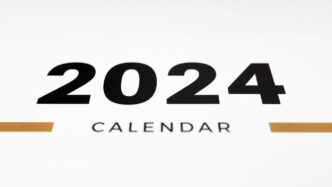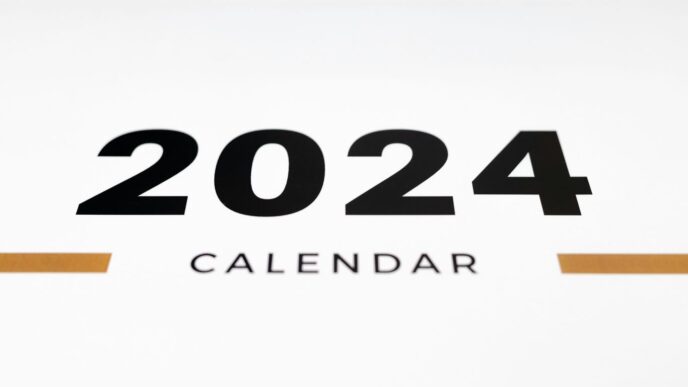So, you’re looking to get your HR and sales teams working together better? It can be a real headache when employee info isn’t lining up with sales data. Think about it: a top salesperson gets promoted, but if that update doesn’t hit Salesforce right away, their commission could be all wrong. That kind of mix-up just slows everything down and can really mess with growth. But what if there was a way to fix that? Integrating Workday with Salesforce can help you get all that employee data in sync, automate those annoying manual tasks, and make smarter choices by bringing HR and sales numbers together. This article will walk you through how to do it, what problems you might run into, and how to use automation to make things super efficient. It’s all about making your salesforce workday better.
Key Takeaways
- Bringing Workday and Salesforce together means your employee and sales data are always up-to-date, cutting down on manual work and errors.
- You can set up automated workflows between Workday and Salesforce, which helps with things like onboarding new sales reps and making sure permissions are correct.
- When you integrate, you get a clearer picture of sales performance and can calculate commissions and bonuses more accurately.
- It’s important to map out how data fields in Workday match up with Salesforce fields to make sure everything transfers over correctly.
- Watch your integration closely after it’s set up. Check for any issues with data, API limits, or security, and adjust things as needed to keep it running smoothly.
Understanding Workday and Salesforce: The Power Duo
What is Workday?
Workday is a cloud system that companies use to handle HR tasks, money stuff, and worker data. Think of it as a central place to manage things like payroll, benefits, and figuring out how many people you need on staff. It’s especially helpful for big and medium-sized companies that want to keep their HR processes running smoothly and follow all the labor laws. It’s pretty important for SaaS applications to integrate with systems like Workday.
What is Salesforce CRM?
Salesforce is the top dog when it comes to customer relationship management (CRM). It lets businesses keep track of how they interact with customers, how well their sales teams are doing, and how effective their marketing is. Companies use Salesforce to see how their sales are going, manage their relationships with customers, and predict how much money they’ll make. It’s all about keeping customers happy and sales strong.
Creating a Single Source of Truth
When you hook up Workday and Salesforce, you get a single place where both HR and sales teams can find the info they need. This means everyone is on the same page, which leads to better teamwork and more efficient operations. Imagine a world where a sales rep’s promotion in Workday instantly updates in Salesforce – no more mix-ups! Here’s why it matters:
- Better Coordination: HR and sales aren’t working in separate worlds anymore.
- Increased Efficiency: No more time wasted hunting down info or fixing errors.
- Improved Decision-Making: Leaders have a clear view of both their workforce and their sales performance.
It’s like giving your company a brain that actually connects all the important parts. This is especially important for employee data synchronization.
Key Benefits of Integrating Workday with Salesforce
Okay, so you’re thinking about connecting Workday and Salesforce? Good move! It’s not just about making things look fancy; it’s about seriously boosting how your HR and sales teams work together. Let’s break down the real wins you’ll see.
Real-Time Employee and Sales Data Synchronization
The biggest win? No more outdated info floating around. Think about it: when someone gets promoted, that info needs to be in Salesforce ASAP. This integration makes sure employee data, like new hires or role changes, automatically updates. No more manual entry, no more wondering if the data is right. It’s all synced up, all the time. This is especially useful for unified profiles.
Improved Sales Compensation and Performance Tracking
Imagine being able to tie sales performance directly to HR data. With this integration, you can! Accurately calculate commissions, bonuses, and incentives based on real-time performance. No more guessing or messy spreadsheets. It’s all clear, data-driven, and fair. This leads to happier sales folks and a more motivated team. Plus, you can easily track sales performance and see who’s crushing it.
Enhanced Workflow Automation
Manual tasks? Gone! Automate workflows between HR and sales. Onboarding new sales reps, setting up permissions, assigning territories – all automated based on rules you set. This frees up your team to focus on what really matters: selling and supporting employees. Think of the time saved! It’s like giving everyone an extra day each week.
Better Compliance and Security
Keeping data safe and following the rules is a must. This integration helps make sure only the right people have access to customer data. This is key for staying compliant with data protection laws and company policies. It’s about protecting your company and your customers. Plus, it gives everyone peace of mind knowing things are secure. This is especially important when dealing with sensitive employee data.
How to Integrate Workday with Salesforce: Step-by-Step Guide
Define Your Integration Objectives
Before you even think about touching any code or configurations, you need to figure out what you’re trying to achieve. What’s the point of this whole integration thing anyway? Clearly defining your goals is the first and most important step. Are you trying to automate employee data updates in Salesforce? Do you want to link sales performance with HR records? Or maybe you’re dreaming of real-time compensation reports? Write it all down. This will guide your decisions later on.
Choose the Right Integration Method
Okay, so you know what you want to do. Now, how are you going to do it? There are a few ways to connect Workday and Salesforce, each with its own pros and cons. It’s not a one-size-fits-all situation. Here’s a quick rundown:
- Workday’s APIs: Workday has REST and SOAP APIs that let you grab and update employee data in real-time. This is great if you need a super custom integration and want a lot of control. But, fair warning, it requires some serious coding skills.
- Salesforce Connect: This lets you access Workday data directly from Salesforce using OData services. Think of it as a window into Workday, without actually moving the data. It’s pretty cool for real-time access, but can be a bit tricky to set up.
- Middleware Integration: Tools like MuleSoft, Dell Boomi, or Workato offer a low-code/no-code approach. They act as a bridge between Workday and Salesforce, letting you sync data with minimal coding. This is a good option if you want something easier to manage.
Map Data Fields Between Workday and Salesforce
This is where the rubber meets the road. You need to tell Workday and Salesforce how their data fields correspond to each other. For example, Workday’s "Employee ID" might need to map to Salesforce’s "User ID". Get this wrong, and you’ll have a big mess on your hands. Here’s what you need to consider:
- Identify Key Fields: Figure out which fields you need to sync between the two systems. Think about employee names, job titles, departments, compensation, etc.
- Create a Mapping Document: Make a spreadsheet or document that clearly shows how each field in Workday maps to a field in Salesforce. This will be your bible during the integration process.
- Handle Data Transformations: Sometimes, the data formats won’t match. You might need to transform the data as it moves between systems. For example, you might need to convert date formats or combine multiple fields into one.
It’s tedious, but trust me, getting the data mapping right is worth the effort. It’ll save you a ton of headaches down the road.
Setting Up Automated Workflows for Salesforce Workday Integration
Automating Role Updates in Salesforce
Let’s say someone gets promoted in Workday. Wouldn’t it be great if their role in Salesforce updated automatically? That’s the goal here. Automating role updates saves time and reduces errors.
First, in Workday, you’ll need to use Workday Studio or the Integration System to create an integration event that triggers when an employee’s role changes. This event will send data to Salesforce. On the Salesforce side, you’ll need an Apex class that listens for these updates and modifies the user’s profile accordingly. Here’s a simplified example of how that Apex class might look:
public class WorkdayIntegration {
public static void updateSalesforceRole(String employeeId) {
// Query Workday for the employee's new role
String newRole = getWorkdayRole(employeeId);
// Update the user's profile in Salesforce
User user = [SELECT Id, ProfileId FROM User WHERE EmployeeNumber = :employeeId LIMIT 1];
Profile newProfile = [SELECT Id FROM Profile WHERE Name = :newRole LIMIT 1];
if (user != null && newProfile != null) {
user.ProfileId = newProfile.Id;
update user;
}
}
private static String getWorkdayRole(String employeeId) {
// Code to call Workday API and retrieve the employee's role
return 'Sales Representative'; // Placeholder
}
}
Leveraging Salesforce Flow and Workday BPF
Salesforce Flow and Workday Business Process Framework (BPF) are powerful tools for automating complex workflows. Think of Flow as Salesforce’s drag-and-drop automation builder, and BPF as Workday’s equivalent. You can use them together to create sophisticated integrations. For example, when a new employee is hired in Workday, a BPF can trigger a Flow in Salesforce to create a user account, assign permissions, and send a welcome email.
Here’s a simple example of how you might use Flow to create a Salesforce user when a new employee record is created in Workday:
- Trigger: A Platform Event is received from Workday indicating a new employee.
- Get Records: Query Workday to get the new employee’s details.
- Create Records: Create a new User record in Salesforce using the data from Workday.
- Send Email: Send a welcome email to the new employee with their login details.
Integrating with External Automation Platforms
Sometimes, you need something more robust than Flow or BPF alone. That’s where external automation platforms like MuleSoft, Workato, or Boomi come in. These platforms offer pre-built connectors and advanced features for integrating Workday and Salesforce. They can handle complex data transformations, error handling, and scheduling. For example, you could use MuleSoft to synchronize employee data between Workday and Salesforce in real-time, ensuring that both systems always have the most up-to-date information. These platforms often use a low-code or no-code approach, making it easier for non-developers to build and maintain integrations.
Here’s a quick rundown of what these platforms bring to the table:
- MuleSoft: Known for its robust API management and integration capabilities.
- Workato: Focuses on ease of use and pre-built connectors for common applications.
- Boomi: Offers a unified platform for integration, data management, and API management.
Common Integration Challenges and Solutions
Integrating Workday and Salesforce can be a game-changer, but it’s not always smooth sailing. You’re bound to hit a few snags along the way. Let’s look at some common problems and how to fix them.
Addressing Data Inconsistencies
Data inconsistencies are a big headache. Imagine employee titles are different in Workday and Salesforce, or maybe the formatting of phone numbers is off. It messes up reports and can lead to errors.
Solution? Use a middleware platform for data transformation and validation. This acts like a translator, making sure the data speaks the same language before it gets synced. You can set up rules to standardize formats, correct errors, and ensure data types match. For example, you could force all phone numbers to follow a specific format like (XXX) XXX-XXXX.
Managing API Rate Limits
Both Workday and Salesforce have API rate limits, which are basically rules about how many requests you can make in a certain time. If you go over these limits, your integration can grind to a halt. It’s like hitting a traffic jam on the information highway.
To avoid this, implement batch processing. Instead of sending individual updates, group them together and send them in batches. Also, optimize your API calls. Only request the data you actually need, and avoid unnecessary calls. Caching frequently used data can also help reduce the number of API requests.
Ensuring Security and Compliance Risks
When you’re moving sensitive employee data between systems, security is paramount. You need to protect that information from unauthorized access and make sure you’re following all the relevant compliance regulations.
Set up role-based access controls in both Workday and Salesforce. This means only authorized users can access certain data. Also, use encryption to protect the data while it’s being transferred and stored. Regularly review your security protocols and make sure they’re up to date with the latest best practices.
Real-Time Versus Batch Processing Dilemmas
Do you need data to sync instantly, or is it okay if it takes a little while? That’s the real-time vs. batch processing question. Real-time updates are great for things like job changes or role updates, where you need the information to be current. Batch processing is fine for less time-sensitive data, like historical sales reports.
Choose real-time updates for critical data and batch updates for less urgent information. This will help you balance the need for up-to-date information with the limitations of API rate limits and system performance.
Optimizing Performance and Monitoring Your Integration
Okay, so you’ve got your Workday and Salesforce integration up and running. Awesome! But the job’s not done. You need to keep an eye on things to make sure everything’s running smoothly. Think of it like this: you wouldn’t just build a car and never check the oil, right? Same deal here. Let’s talk about how to keep your integration humming along.
Monitoring Integration Health
First things first, you need to know what’s going on under the hood. Setting up proper monitoring is key. You can’t fix what you can’t see, right? Here’s how to get started:
- Dashboards are your friend: Create dashboards in both Workday and Salesforce that show you the important stuff. Think about things like the number of records updated daily, average API response times, total API calls, and error rates. Break down those error rates by status (success, error, in progress) to get a clearer picture.
- Error logging is a must: Turn on error logging in both systems. In Workday, configure logging for each integration task. In Salesforce, use Apex exception logs to catch errors in real-time. Make sure these logs give you enough detail to figure out why things are failing. For example, in Salesforce, you can use Apex code to log integration errors. This helps in identifying issues quickly.
- API monitoring is crucial: Keep an eye on those API calls! Track failed calls, response times, and overall usage. This will help you spot bottlenecks and potential problems before they cause major headaches. You can even set up real-time notifications using Salesforce’s Process Builder or Flow to alert you when error thresholds are hit. Think emails or automatically created tasks.
Optimizing Batch Processing
Batch processing is great for handling large amounts of data, but it can also be a performance hog if it’s not set up right. Here’s how to manage batch job timings and make it more efficient:
- Check job durations: In Workday, go to Integration > Integration System and check the job duration. Is it taking longer than expected? That’s a red flag. In Salesforce, use Apex Scheduler to manage batch job timings and optimize performance.
- Optimize data loads: If data loads are slow, try reducing the payload size. Optimize your database queries, or use incremental data synchronization (sync only the changed records). This can make a huge difference.
- Improve API response times: High API response times? Try caching frequently used data, optimizing API call frequency, or improving error handling to reduce retries. Every little bit helps.
Continuous Performance Optimization
This isn’t a one-time thing. You need to keep tweaking and improving your integration over time. Here’s how to make it a habit:
- Set up a continuous improvement plan: Use version control (like Git) to track changes to your integration scripts. Analyze performance over time to make sure things are still running smoothly. This helps with precision workforce planning.
- Regularly review and update: Both Workday and Salesforce APIs change over time. Make sure you’re keeping up with those changes and updating your integration accordingly. Don’t let it get stale!
- Address performance bottlenecks: Based on the data you’re collecting from reports, logs, and API monitoring, identify and fix those bottlenecks. This might mean optimizing data loads, improving API response times, or tweaking your code. The goal is to keep things running as efficiently as possible.
Strategic Advantages of Salesforce Workday Integration
Integrating Workday and Salesforce isn’t just about connecting two systems; it’s about unlocking strategic advantages that can transform how a business operates. It’s about making smarter decisions, planning more effectively, and enabling sales teams to perform at their best. Let’s look at some of the key benefits.
Precision Workforce Planning
Workforce planning can be a real headache, especially when you’re trying to align skills with demand. Integrating Workday and Salesforce helps harmonize skills supply forecasts from Workday with demand signals from Salesforce, leading to more accurate capacity planning. This means you can better anticipate your staffing needs, avoid shortages, and make sure you have the right people in the right roles at the right time. It’s about getting ahead of the curve and being proactive, not reactive. For example, if Salesforce predicts a surge in demand for a particular product, Workday can help you identify employees with the necessary skills or plan for training to upskill your workforce. This goal setting is a game changer.
Continuous Financial Planning
Financial planning is another area where integration can make a big difference. By feeding unified employee and customer data into rolling forecasts, scenario modeling, and operational analyses, you get a much clearer picture of your financial situation. This allows for more informed decision-making and better resource allocation. Think about it: you can see how changes in staffing levels or sales performance are likely to impact your bottom line, and you can adjust your plans accordingly. It’s about having a real-time view of your finances and being able to adapt to changing circumstances quickly. This is especially important in today’s fast-paced business environment.
Intelligent Sales Enablement
Sales teams need all the help they can get, and integration can provide them with the tools they need to succeed. By analyzing historical activity and recommending targeted coaching, you can guide sellers through complex deals and improve their performance. This means providing them with the right information at the right time, so they can close more deals and generate more revenue. It’s about empowering your sales team to be more effective and efficient. For instance, if a sales rep is struggling with a particular type of deal, the system can recommend specific training or coaching resources to help them improve. This long-term success is what we are aiming for.
Transforming HR Data with Salesforce Data Cloud
Okay, so you’ve got Workday and Salesforce humming along, but what if you could really unleash the power of your HR data? That’s where Salesforce Data Cloud comes in. It’s all about taking that raw HR info and turning it into something truly useful across your whole company. Think better insights, smarter decisions, and a more connected workforce. Let’s get into it.
How Workday and Data Cloud Work Together
Basically, Data Cloud acts like a central hub for all your data, including what’s coming from Workday. It’s not just about dumping data in one place; it’s about making sense of it. Here’s the gist:
- Data Ingestion: Workday data gets pulled into Data Cloud using a connector. Think of it as a pipeline.
- Harmonization: Data Cloud cleans up the data, gets rid of duplicates, and makes sure everything is consistent. This is super important for accurate reporting.
- Identity Resolution: It links all the different pieces of information about a single employee, even if they’re stored in different systems. This gives you a complete view of each person.
Transforming Data into Unified Profiles
This is where things get interesting. Data Cloud takes all that raw Workday data – job titles, performance reviews, salary info, the whole shebang – and turns it into unified employee profiles. These profiles give you a 360-degree view of each employee, combining HR data with information from other systems like CRM and IT service management. Imagine being able to see an employee’s sales performance alongside their training history and engagement scores. That’s the power of unified profiles. This is a great way to improve financial forecasting.
Building Employee Segments Interactively
Now that you have these unified profiles, you can start creating employee segments based on all sorts of criteria. Want to find all high-potential employees in the marketing department with less than a year of tenure? Easy. Need a list of employees who haven’t completed their annual compliance training? No problem. These segments update in near real-time, so you’re always working with the latest information. Here are some examples of segments you could build:
- New hires in the sales department who need onboarding.
- Employees with high performance ratings who are at risk of leaving.
- Managers who haven’t completed their leadership training.
Conclusion: Streamline Your HR and Sales Operations with Workday-Salesforce Integration
Bringing Workday and Salesforce together really changes things for companies that care about managing their people well and tracking sales. When you get employee info, like new hires or promotions, to automatically update in Salesforce, it cuts down on a lot of manual work. This also helps make sure sales commissions are right and that everyone has the right access to what they need. It’s about making things run smoother and getting more done. Whether you use APIs, middleware, or Salesforce Connect, the main thing is to plan it out, test everything, and keep making small improvements. That’s how you get it to work well for the long haul.
Frequently Asked Questions
Why should companies connect Workday with Salesforce?
Connecting Workday and Salesforce means their data talks to each other. This helps businesses run smoother by making sure everyone, from HR to sales, has the most up-to-date info. It’s like having one big, smart brain for your company.
What are Workday and Salesforce?
Workday is a system that helps manage people, like their pay, benefits, and job roles. Salesforce is a system that helps manage customers and sales. When they work together, you get a full picture of your employees and how they help with sales.
What are the main good things about connecting Workday and Salesforce?
The main good things are that employee and sales info stays fresh, sales people get paid correctly based on their work, and many tasks that used to take a lot of time can now happen automatically. It also helps keep your company’s rules and data safe.
How do you connect Workday with Salesforce?
You can connect them in a few ways. One way is to use special tools called APIs that let the systems share data directly. Another way is to use special software that acts as a bridge between them. You need to pick the best way for your company’s needs.
What are some common problems when connecting these systems, and how can you fix them?
Sometimes the data doesn’t match up, or there are limits to how much data you can move at once. Also, keeping everything secure is super important. You can fix these by making sure your data is clean, planning when to move big chunks of data, and setting up strong security rules.
Does connecting Workday and Salesforce help with planning for the future?
Yes, it does! When these systems are connected, HR can see how their hiring choices affect sales, and sales teams can get better insights into their performance. This helps the whole company make smarter plans and grow faster.














